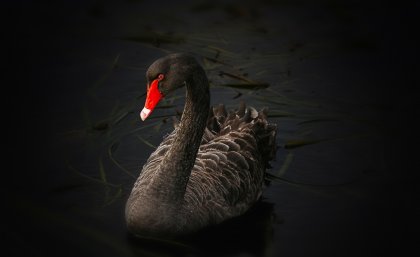
Scientists have mapped the genome of the black swan in an effort to understand immune responses to the deadly ‘bird flu’ virus and better protect public health.
The University of Queensland team, led by Dr Kirsty Short and PhD candidate Mr Anjana Karawita, sequenced the genome of black swans, a species particularly susceptible to Highly Pathogenic Avian Influenza (HPAI), also known as bird flu.
“HPAI occurs mainly in birds, is highly contagious and can be deadly, especially in domestic poultry,” Dr Short said.
“As of 2011, the United Nations Food and Agriculture Organization has considered six countries to be endemic for the virus in poultry – Bangladesh, China, Egypt, India, Indonesia, and Vietnam.
“And the virus can occasionally spill over into humans with devastating consequences.
“Since 2003, this virus has only infected approximately 800 people worldwide, however, more than 50 per cent of infected individuals have not survived the disease.
“If the current pandemic teaches us anything, it’s that it is important we know more about potential animal-to-human viruses early.”
The researchers are hoping to understand why black swans fall victim to the virus so easily and quickly.
“Of all wild bird species, black swans appear to be the most susceptible to severe symptoms of the disease and can die from the virus within 24 hours,” she said.
“In contrast, ducks typically only develop mild symptoms of the disease.
“We therefore wanted to understand if the swan genome was missing some component of the immune response that makes them uniquely susceptible to HPAI.
“The research team has already identified certain genes that are differentially expressed in black swans, which might be involved in how the disease affects them.
“We’re annotating immune genes in the black swan genome and comparing them to genes in the closely related mute swan genome, along with other avian species.
“We’re also employing computer-driven large scale comparisons of these genomes.”
The team has made the genome publicly available, so researchers around the world can continue to build a better understanding of HPAI and its effects.
The black swan genome version 1.0 is now available publicly in National Centre for Biotechnology Information (NCBI) database (under bio project code: PRJNA640810).
The UQ team has been collaborating with international researchers from the Max Planck Institute of Ornithology to also assemble the first ever mute swan genome, and are hoping to make this publicly available soon.
Media: Dr Kirsty Short, k.short@uq.edu.au, +61 452 374 811; Dominic Jarvis, dominic.jarvis@uq.edu.au, +61 413 334 924.




